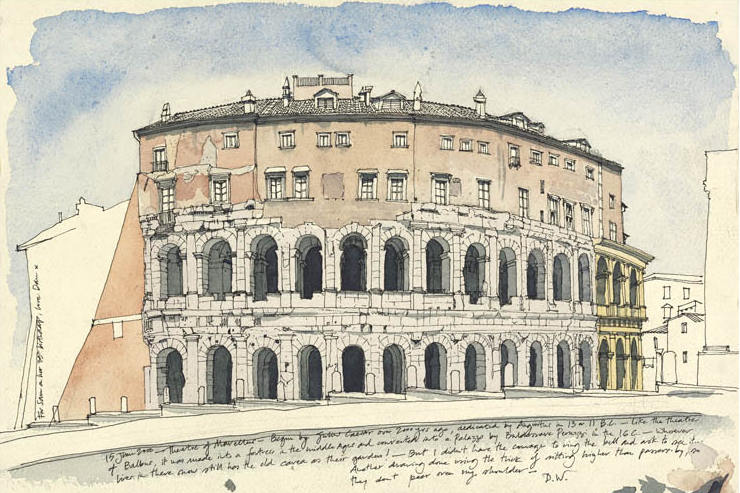Where to stay in Italy
Italy is a country blessed by geography, history and culture. Known for its art, its food, wine and incomparable landscapes, it can be difficult to choose where to aim for, particularly on a first trip.
The Italian peninsula stretches out across the mediterranean, nearly touching Greece at its easterly tip, close to northern Africa with its island of Sicily and spanning France, Switzerland, Austria and Croatia in the north.
For a better picture have a look at the maps on this page: Where is Italy
Italy is a bridge across the European divide and the variety found across the nation reflects this, from the arabic architecture of the Sicilian cities to the Greek temples of southern Italy, from the idealistic Renaissance cities of Tuscany to the magical cityscape of Venice in the North - all seemingly hinged on the amazing city of Rome, layered in history, both metaphorically and quite literally.
Italy is also a city whose geography determines its character, so here is a
Physical Map of Italy
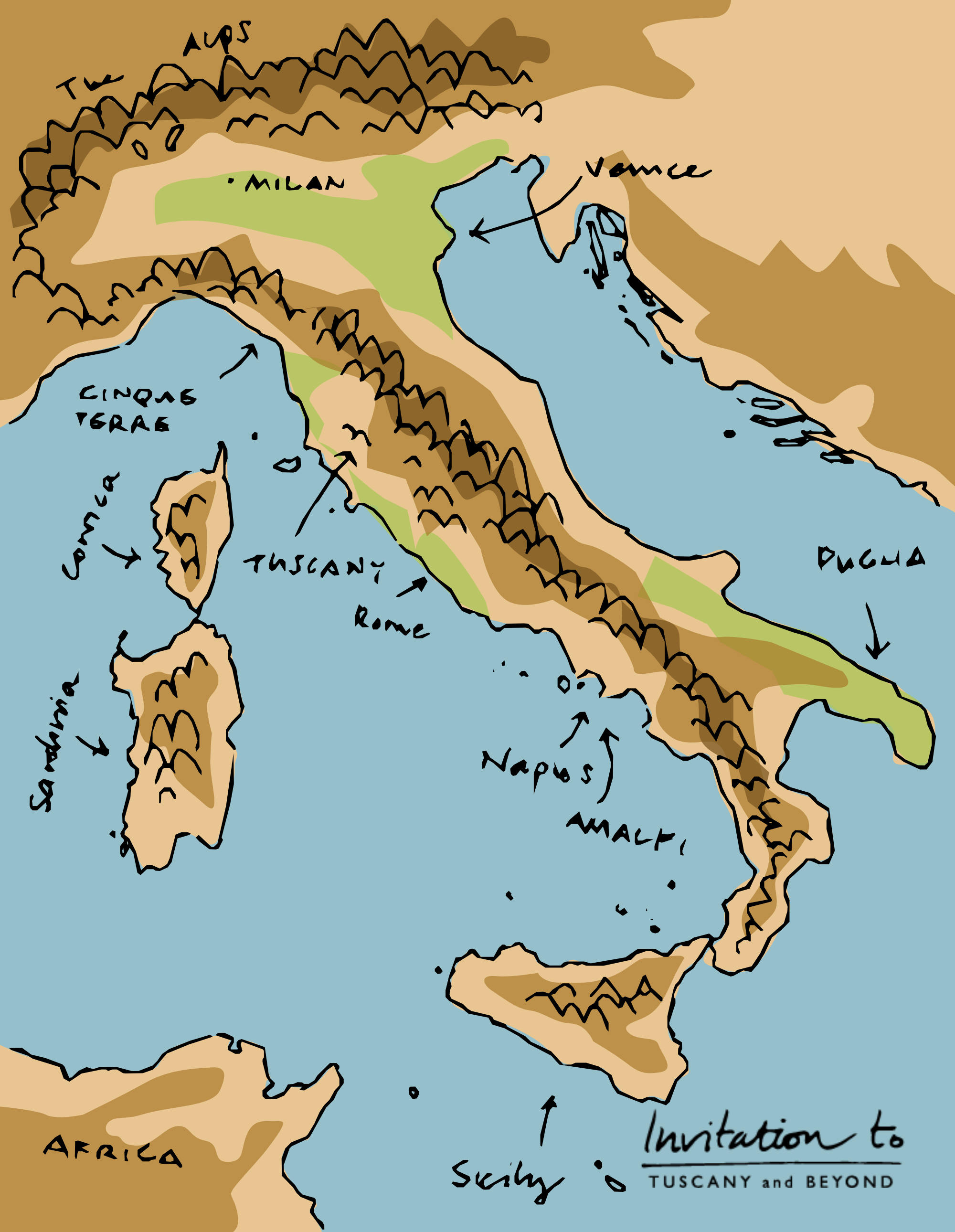
Regions of Italy
Italy is divided into 20 regions, all with some degree of autonomy and each with their own character.
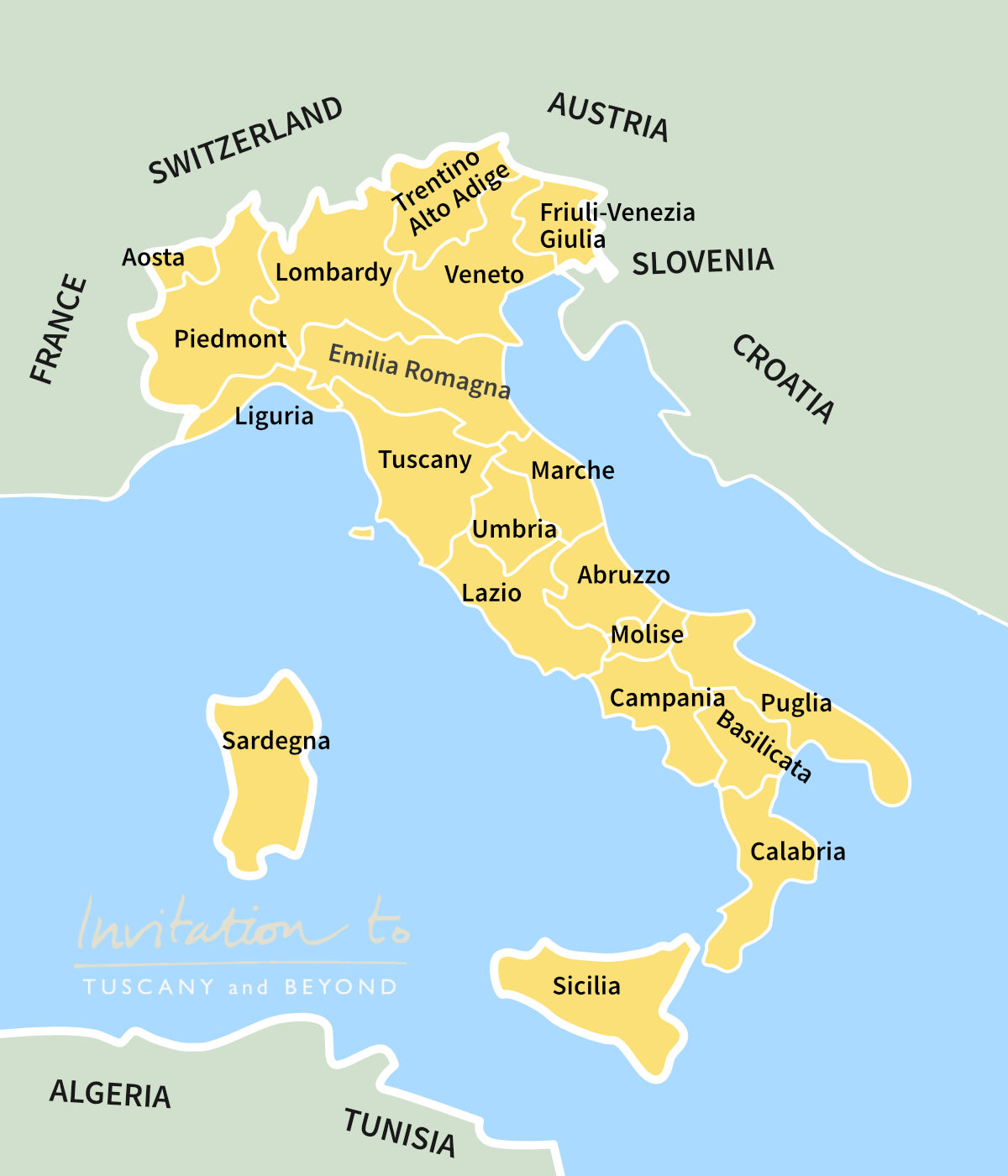
As a general rule, the north of Italy is more industrialised than the south, while the southern regions are more agriculture based. Food, culture and history are prized in all regions of Italy, with great pride taken in local produce and local traditions.
Getting to Italy
Flying to Italy
Italy's main intercontinental airports are in Milan and in Rome, but for a complete list of Italy's international airports have a look at this handy map of International Airports in Italy.
Getting to Italy by Train
It is easy to reach Italy by train from all over Europe. For more details on the train trip from the UK have a look at this page: UK to Italy by Train
Driving to Italy
When driving to Italy you'll normally enter from the north, though the country can also be reached by ferry from other directions. Here is our advice on how to drive to Italy from the UK
Famous regions of Italy
With so many riches across the country it can be difficult to know where to start. Our advice is to pace yourself and not try to see everything in one go. It would be impossible and, like a fine meal, or a fine wine, the beauty of Italy must be savoured and enjoyed over time - rush it and you will fail to grasp it. Some areas of Italy are more famous than others, and they are:
The Italian Lakes
Three large lakes in the very north of Italy, Lake Maggiore, Lake Como and Lake Garda, spread over two regions, Lombardia and Piemonte. Historically a playground for the rich of Milan, the lakes have fabulous old villas, magical islands to explore and the Alps within easy reach. Lake Como is the most famous, beloved by the Romans (Pliny had several villas on the shores of the lake in the 1st century - though their exact position has still not been pinned down. They're believed to have been close to Bellagio). The southern end of the lake is the more fashionable end, while the north is perfect for exploring Alpine passes and valleys, exploring villages and going sailing.
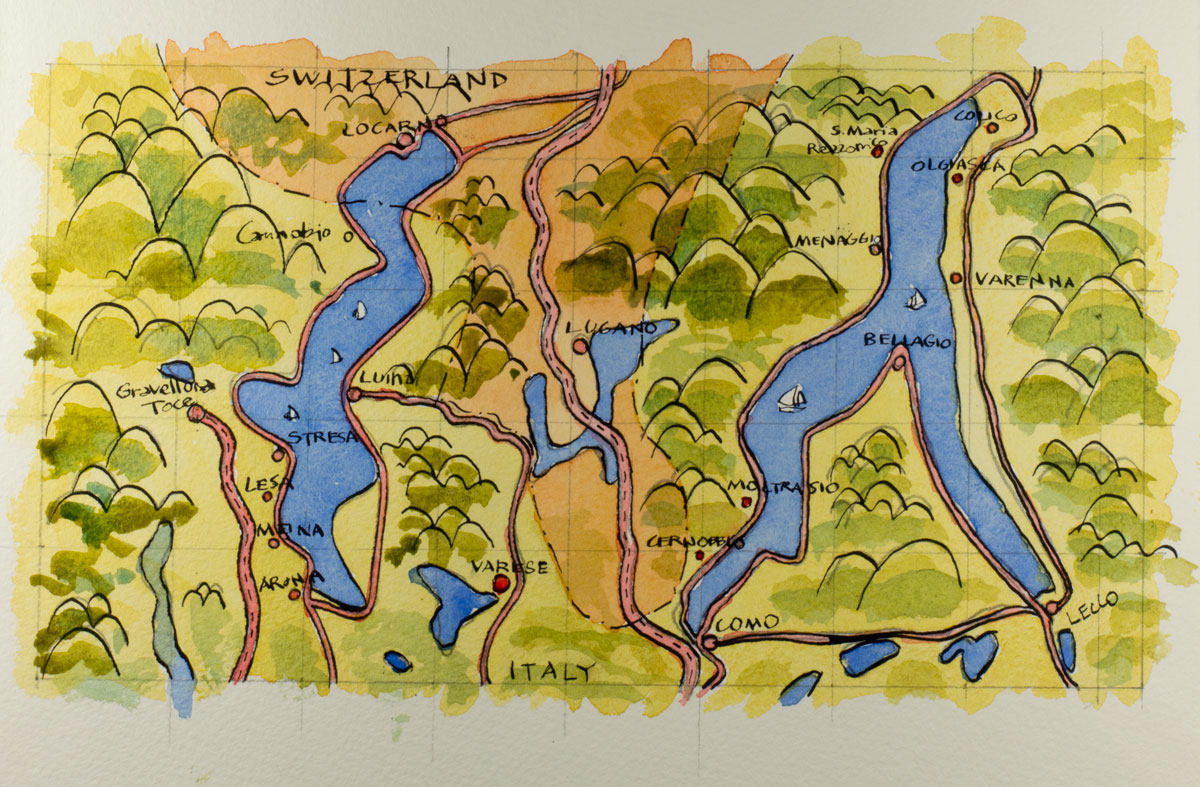
Find a villa in the Italian Lakes
Veneto & Venice
A city born from a need to get away from invading hordes of barbarians, today it is one of the most magical cities in the world. Read more about Venice's origin story.
Everybody should see Venice at least once. It's worth staying away from Venice if you don't like crowds - like Mestre, or Verona as mentioned above. It's also worth visiting Venice during one of the Biennale's, the art and architecture events on once every two years.
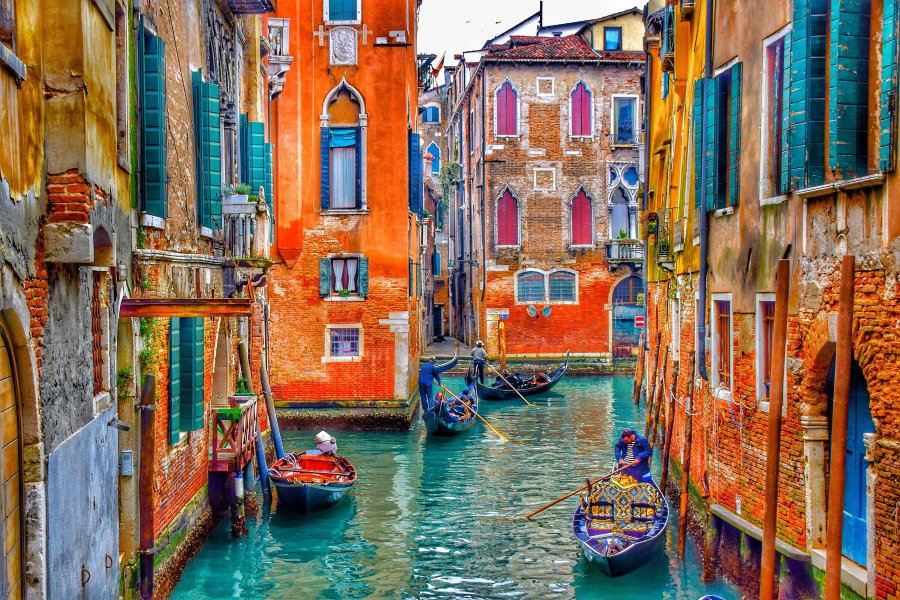
Tip for visitors to Venice: try staying in a town like Verona and then going to Venice on the train. It's an hour's train trip and you'll be staying in a city that regularly stages live opera in their still standing original Roman amphitheatre, the "Arena" - a fabulous experience. Check the 2024 schedule here: Arena di Verona 2024
Liguria and the Cinque Terre
Liguria is the region where the Italian coast curves round to meet Provence; it's a narrow, crescent-shaped area where the beaches are backed by the mountains of the Apennines. The coastline is known as the Italian Riviera, a series of towns and ports which have historically always looked more to the sea than inland. The 5 colorful fishing villages of the Cinque Terre, as well as stylish Portofino and Santa Margherita Ligure, are at the southern end of Liguria and are very popular with visitors.
Tuscany & Florence
The heart of the Renaissance, the cradle of modernity and of modern democracy, Tuscany has long been beloved by visitors from the UK and the USA. With enormous amounts of art, fabulous hill villages and towns to explore, and some of the best cooking and wines in the world, Tuscany remains a firm favourite.
How to get to Tuscany
Find the best wineries in Tuscany here
I grew up in Tuscany so most of our villas are here, you can find them all here: Villas in Tuscany
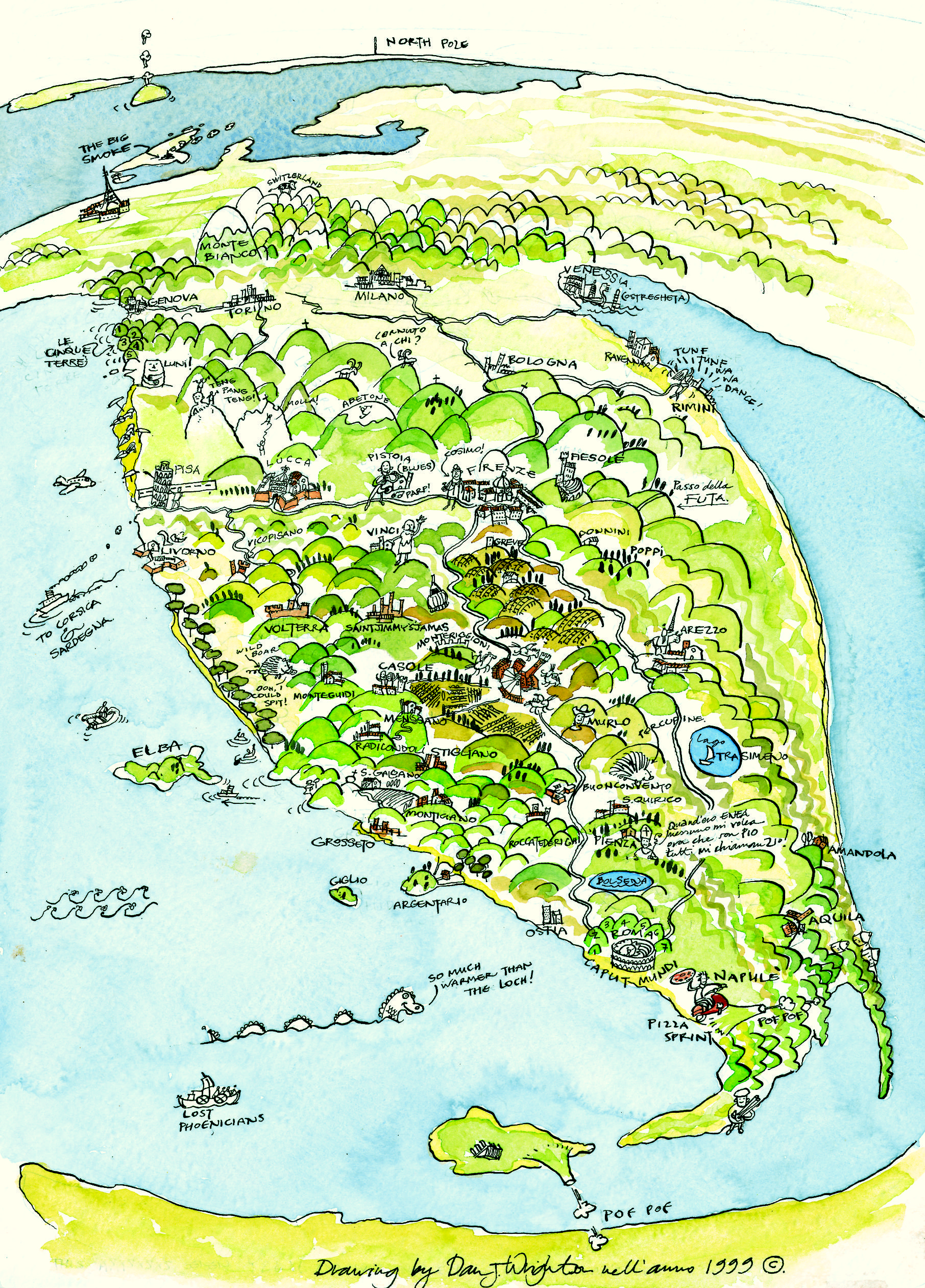
Find a place to stay in Tuscany
Umbria
Umbria is a jewel of a region, landlocked south-east of Tuscany and north-east of Rome and Lazio. It has some spectacular cities, like Orvieto and Perugia, as well as fabulous forested hills covered in hilltop towns, waterfalls and ancient sanctuaries. To read more about Umbria have a look at our Guide to Umbria
How to get to Umbria
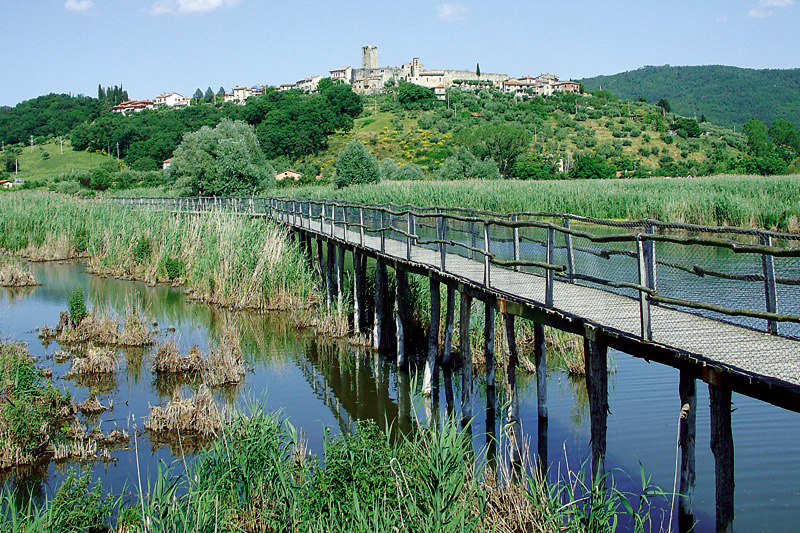
Lazio & Rome
The capital of the Roman empire, the centre of Mediterranean power and later of the Catholic church, Rome is a magical city that should not be missed. Our sister company in Denmark, Ponti & Sofia, has a selection of bijou apartments in Rome centre. The site is in Danish but Manuela speaks good english.
The sketch below is of the Pantheon, an amazing building in the heart of Rome, build around 25BC by Agrippa as a temple dedicated to the twelve Gods and to the living Sovran. Unlike many temples it wasn't destroyed with the advent of Chrisitanity but was transformed into a church, St Maria ai Martiri.

Campania & Amalfi
Amalfi and Sorrento are everything they promise and more. Colorful buildings crowded onto cliffs with tiny roads weaving through on impossible outcrops, all scattered with scooters, buses and Ferraris. A crystal blue sea as a backdrop to tiny restaurants with terrace shaded by large sail like canvases.
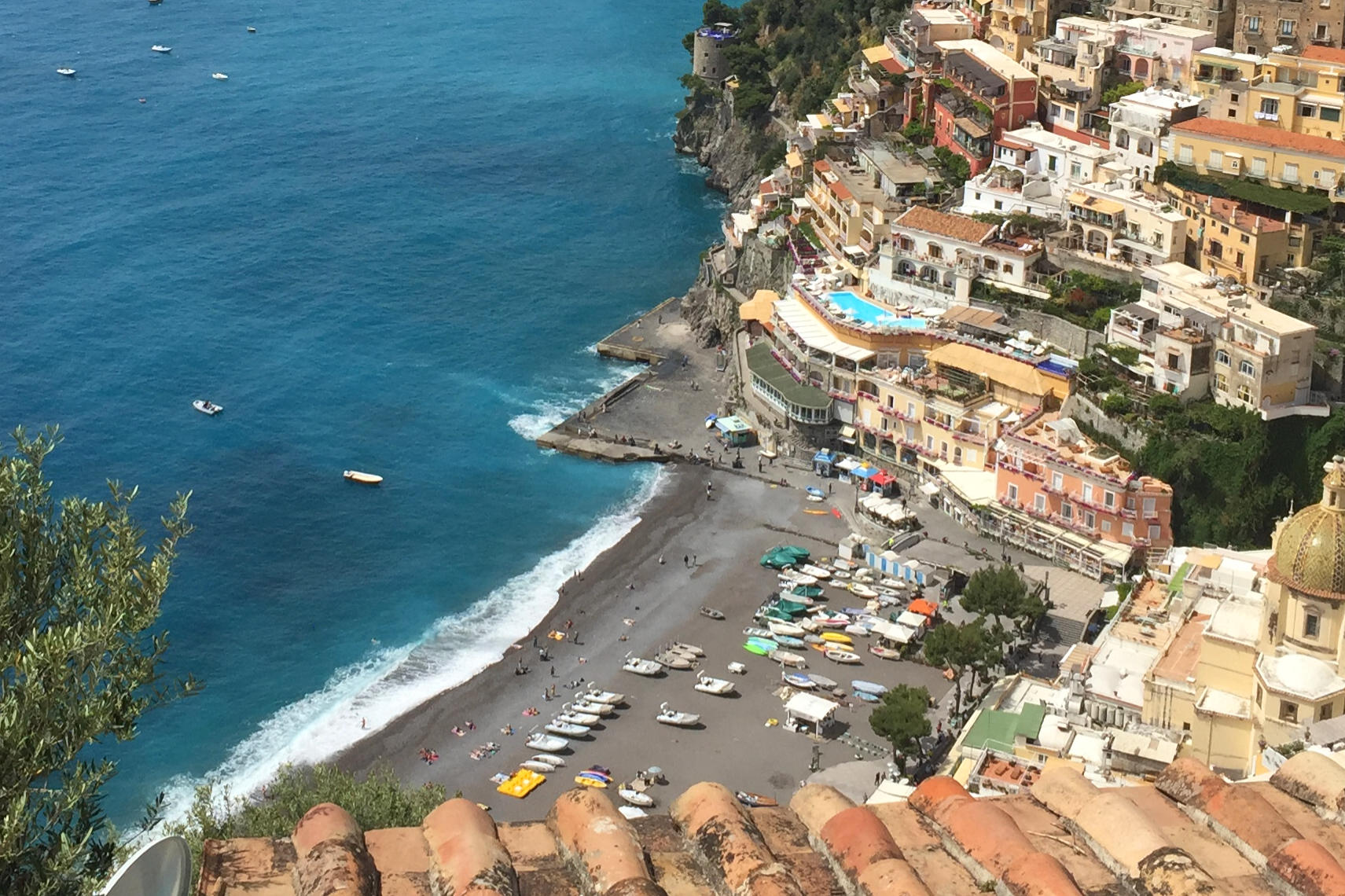
And of course, Pompei is in Campania too! Heading for Pompeii? Try Herculaneum instead. Just as interesting, if not more, and far quieter. And, unlike Pompeii, the pyroclastic material that covered Herculaneum carbonized and thereby preserved wood in objects such as roofs, beds and doors as well as other organic-based materials such as food. Guide to Visiting Herculaneum
Puglia
Puglia is the long, narrow heel of Italy, a peninsula of around 400km from north to south. For centuries it was more part of the Greek world than of Northern Europe, a strategic province extending into the Mediterranea. Puglia is a region of fabulous beaches, baroque churches and fabulous food.Today clean seas and reliable sunshine are the draws for holiday-makers both Italian and foreign, and the conical "Trulli" and the charming "Masserie" are popular for the villa contingent.
Read more about the beaches of Salento
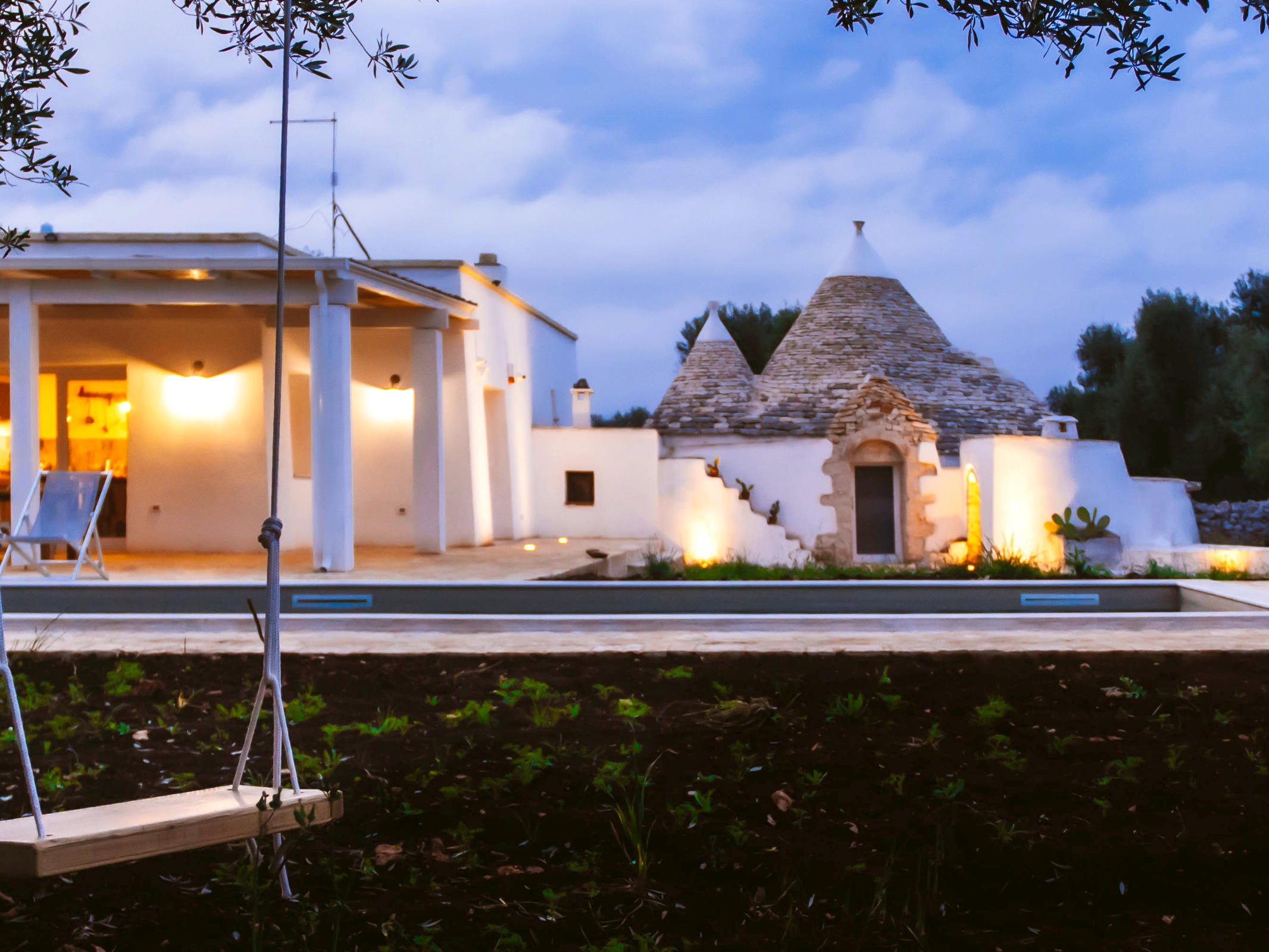
Find a place to stay in Puglia
Calabria
Calabria, the toe of Italy, is sometimes undervalued - it has beautiful Greek Temples, wonderful beaches and fantastic food. The school of Pythagoras, the famous Greek philosopher, was based in Crotone, in modern day Calabria, the toe of the Italian boot.
The mountainous region of the Aspromonte has hidden hill villages with byzantine frescoes in tiny churches and small simple restaurants with amazing food. The sketch below is from a trip to visit the Temples of Paestum, a group of fabulous 5th century BC Greek temples south of Naples.
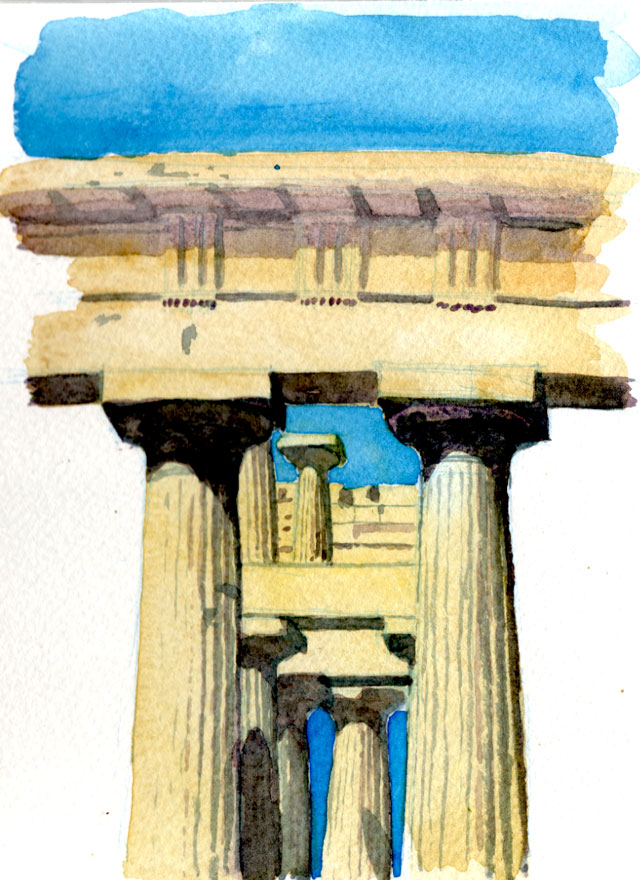
The temples were breathtaking - but I also went driving in the mountainous region inland and visited a series of villages, for no greater reason than seeing them from the road. Several of them had quite remarkable churches with fabulous frescoes inside, none of them mentioned in my local guide. And the tiny restaurants I stopped at were fabulous. The menu often consisted of a diminutive Calabrian mother telling me what she'd cooked that day - and it was always good.
It's worth avoiding turning your visit into a ticklist. Enjoy the unexpected and leave time for it.
Sicily
For centuries Sicily and the South of Italy were known as "Magna Grecia", an extension of the Greek territories. Modern day Naples, far north of Sicily, owes its name to the Greek for "New City" Nea Polis. Archimedes, the Greek mathematician, physicist, engineer, astronomer, and inventor, was from the Sicilian city of Siracusa.
All of this make Sicily and southern Italy a treasure trove of Greek temples, mosaics and sculptures.
If you’re looking for places to stay in Italy we have
